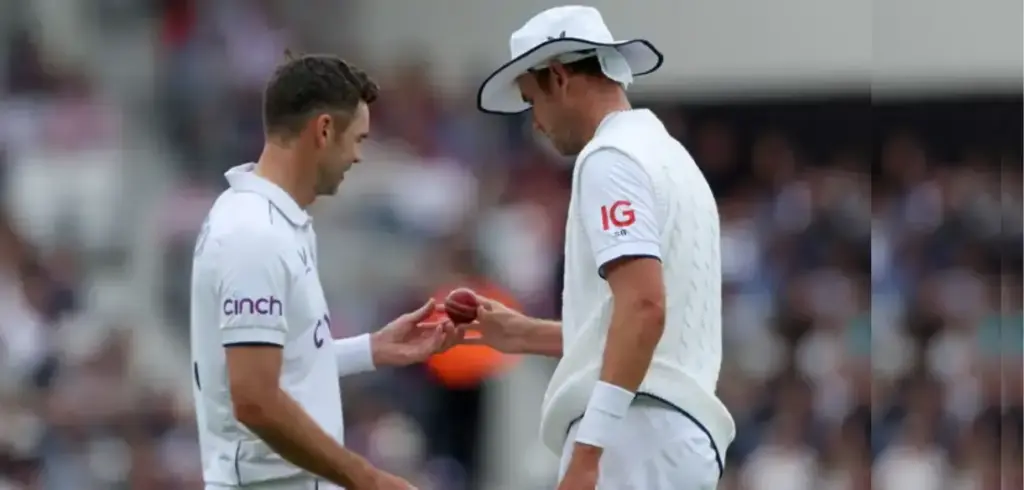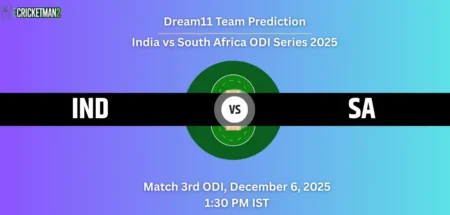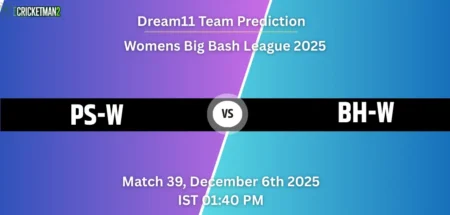The red cricket ball is pretty much integral to Test cricket. It’s like the identity of the longest format.
And the ball has been in use for more than 150 years in Test cricket. While the quality of red balls has gone up in recent years, they need to be changed in matches occasionally.
So when are the balls replaced? And what’s the process behind a ball change?
This article will provide a rundown on the ball change rules in Test cricket.
The Basics of Red Ball in Test Cricket
First, let’s understand some basics of the red ball usage in Test cricket.
As usual, every Test innings starts with a new red ball. The fresh red cherry can assist seamers to extract good swing, while spinners will make good use of an old ball to spin it.
But a single ball can’t last throughout the entire innings. The ball is likely to endure some damage at some points. And that’s when the ball change comes into the picture.
So when is a ball changed in Test cricket?
The ball change will happen in certain scenarios. Let’s see them one by one.
Ball Change After 80 Overs:
In a normal scenario, a ball change can happen after every 80 overs in an innings. But it’s not mandatory to change the ball following 80 overs of play.
A lot depends on the match conditions and particular strategies of the fielding team. But they do get a chance to get a new ball after every 80 overs.
Like to Read: West Indies Second‑Lowest Test Total in History
Ball is Lost:
Losing a ball is rare in Tests, as batters often don’t hit the ball into the stands as much as they do in T20s. But if such a situation arises, then umpires can replace the ball.
And the replaced ball will be pretty much similar to the lost one in condition. This way, things remain fair for both sides.
Ball is Damaged:
If the umpires notice the ball has suffered any physical damage, then they can replace it. The damage can either be to the leather or the seam of the ball.
Ball Loses Shape:
The chances of a ball losing its shape are quite high. Due to the constant hitting, the ball is likely to lose its shape. The shape of the ball, though, doesn’t matter as far as it passes the ball gauge test.
Now what’s the ball gauge test?
So if the fielding side complains of shape lost, the umpires check if it needs replacement. And for that purpose, they use a ball gauge.
The ball gauge has two rings. The ball passes through one of the rings while it doesn’t from the other ring.
One of the on-field umpires checks if the ball meets the criteria. If it does, then the ball is good for use.
But if the ball passes through both rings or it doesn’t though both, then the ball has lost its shape. And then the umpire will change the ball.
Ball Tampering:
Ball tampering isn’t something we see often these days. But if the umpire suspects the bowling side is altering the condition of the ball by unethical means, then they reserve the right to swap the ball.
Teams can alter the condition of the ball to gain an unfair advantage. They can apply prohibited substances or scuff the surface of the ball with some objects. Remember Australia used sandpaper to change the condition of the ball in a Test in 2018?
How often does the ball change happen in Test cricket?
It’s purely based on the condition. As mentioned earlier, teams can ask for a replacement ball after every 80 overs in an innings. And this is a regular ball change allowed by the laws.
But if any of the other circumstances arise, then a ball change can happen at any time. So there’s no fixed limit on ball change in a Test innings.
But the final decision to replace the ball lies with the two on-field umpires. The bowling or batting team doesn’t have any direct say, though.
How are the balls selected for replacement?
If a ball change is due after 80 overs, then a fresh ball will be given to the bowling side. But if the ball needs replacement due to shape loss, damage, or tampering, then a like-for-like ball is chosen.
The fourth umpire brings a box full of used balls. Then the on-field umpires match the condition of the ball with the one that needs to be replaced. Once they feel a ball is closer to the condition, then they replace it.
Can teams strategically ask for a ball change?
No. The ball change happens only if it meets one of the above criteria.
A team can’t ask for a ball change to suit their plans or strategies. Yes, the teams want a ball change when nothing is going their way. But umpires can’t replace it if there’s no damage or shape loss.
The teams, though, can ask for a replacement if it loses shape or suffers damage. Then the umpires will assess the condition of the ball and decide if there’s a need for replacement or not.
Also Read This: Most Dangerous Bowlers in World
Frequently Asked Questions (FAQs):
How many overs before a ball is changed in Test cricket?
For a regular ball change, a new ball is available for use after every 80 overs in an innings.
When is a ball changed in Test cricket?
In general, a ball change can happen if it’s lost, damaged, deshaped, or tampered with.
How do umpires check the ball’s shape?
The umpires use a ball gauge to check if the ball has lost its shape or not.
What is a ball gauge?
A ball gauge comes in handy to check the shape of the ball. It has two rings, with the ball passing through one but not the other.
Where do replacement balls come from?
The fourth umpire collects used balls from the cricket associations where matches will take place. They are generally used in previous first-class or Test matches.
Who selects the replacement ball?
The two on-field umpires can select the replacement ball.
How many companies manufacture cricket balls?
Three companies manufacture cricket balls – Dukes, Kookaburra, and SG. England and the West Indies prefer Dukes ball, India uses SG, while Australia and other countries go for Kookaburra.




